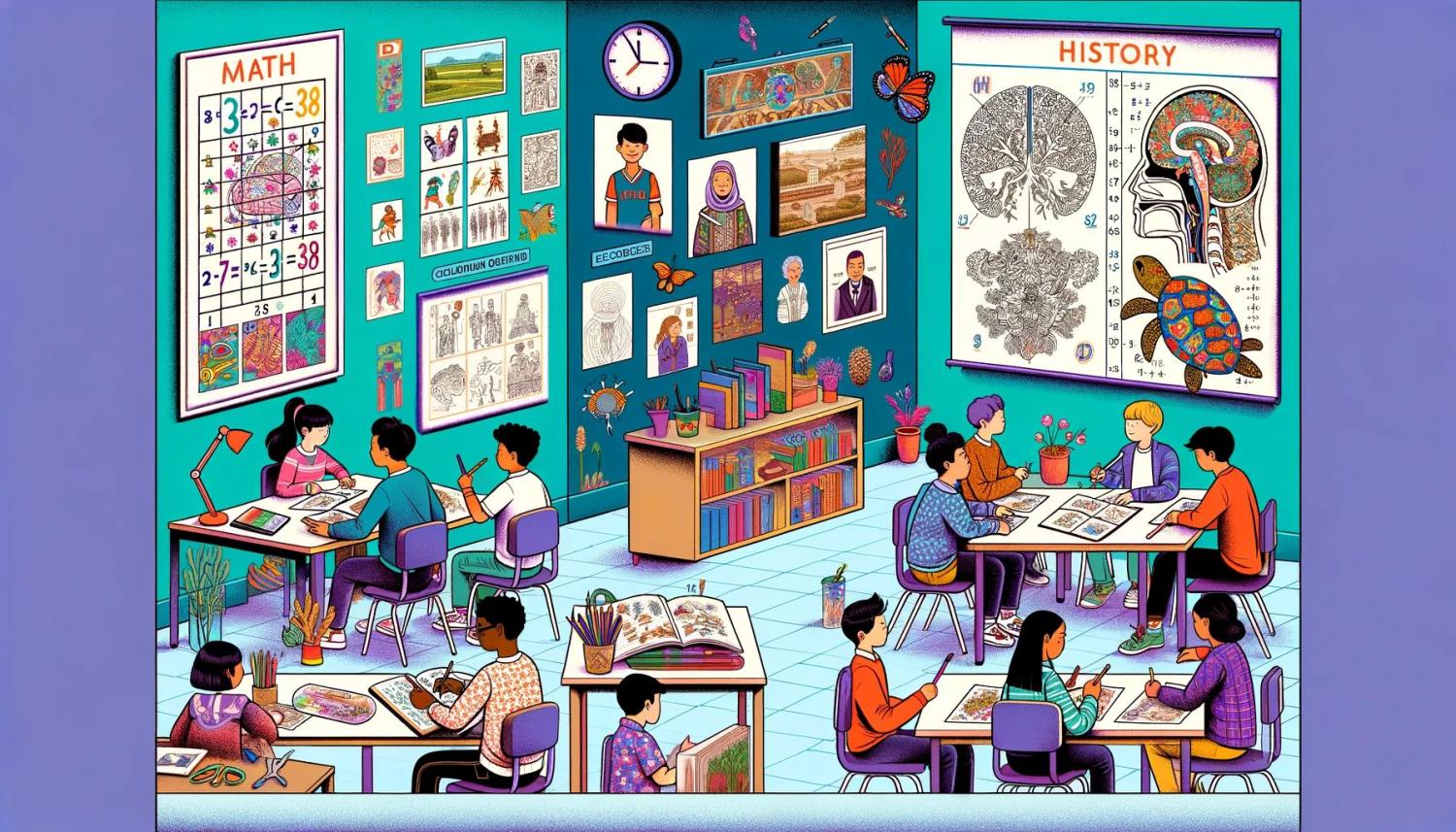
3 minutes, 43 seconds
-2.7K Views 0 Comments 4 Likes

In education, engagement and understanding go hand in hand. Integrating coloring activities is one creative method for enhancing learning across various subjects.
"Integrating Coloring Activities into Daily Learning" delves into how this artistic endeavor can be a versatile educational tool, making complex concepts more accessible and enjoyable for students.
Educators can provide a multifaceted learning experience that stimulates creativity and reinforces knowledge by incorporating coloring into math, science, and history lessons.
Color by numbers is a classic example of using coloring to teach math. This method can be adapted for various ages and mathematical concepts, from basic addition and subtraction to more complex equations involving multiplication, division, and fractions.
By associating different colors with specific answers, children can visually solve problems, making abstract concepts tangible. It not only aids in understanding and retention but also adds an element of fun to math practice.
In science, coloring activities can transform learning from memorization to exploration. Labeling anatomical diagrams, for instance, allows students to engage deeply with the structure of the human body, plants, or animal species.
Coloring pages featuring ecosystems, the water cycle, or the moon's phases can help students visualize and understand these scientific phenomena. By coloring these diagrams, students can better grasp the complexities of the natural world in a hands-on, interactive way.
History can sometimes feel distant to students, but coloring activities featuring historical figures, events, and landmarks can bring the past to life. Students can explore different eras and cultures vividly and engagingly by coloring pages of famous leaders, ancient civilizations, and pivotal moments.
These activities can be complemented with stories or facts about the subjects being colored, providing a richer context and deeper understanding of historical narratives.
To effectively integrate coloring activities into daily learning, educators can:
Integrating coloring activities into daily learning offers a dynamic way to engage students across subjects. Whether solving math problems, exploring scientific concepts, or diving into historical adventures, coloring can make education a more colorful, enjoyable, and effective experience.
By embracing this creative approach, educators can foster a love of learning, creativity, and discovery in their students, proving that sometimes, the best lessons come not from a textbook but from a crayon.
Source: ESLE


